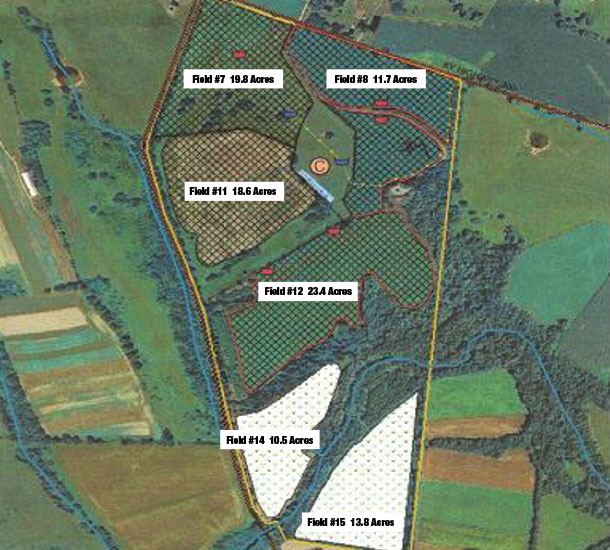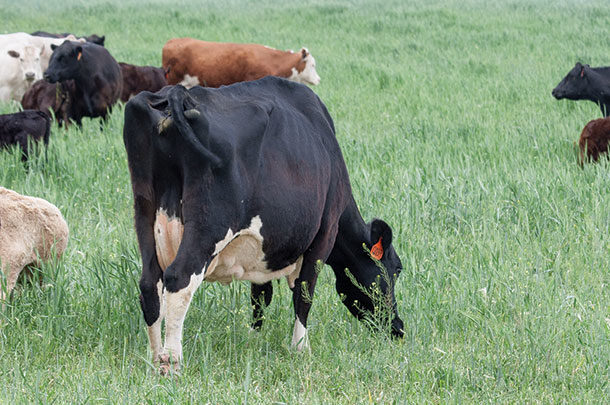One of the services offered by the Natural Resources Conservation Service (NRCS) is grazing management plans. These plans can be developed by a technical service provider (TSP).
A TSP is an individual or business certified to help producers plan and apply conservation practices on their land. The TSP works with the producer to develop a specialized conservation plan known as a conservation activity plan (CAP).
TSPs can also identify resource concerns on the farm or ranch, develop a plan to address those concerns and help achieve the landowner’s goals in conservation.
Sid Brantly, national rangeland management specialist, says TSPs are qualified people who offer the opportunity to develop activity plans for conservation on producers’ farms.
“A part of the consulting fee they charge can be offset through the Environmental Quality Incentives Program (EQIP), through NRCS. The TSP’s role gives producers a chance to discover potentially good opportunities for the conservation of farm resources for the future,” he says.
The TSP is an extension of the work provided by NRCS. “This focus is part of the NRCS directive, but there are not enough resource conservationists on staff to go around,” Brantly says.
Bill Payne is a TSP in Kentucky. “At this point, there are not very many grazing management TSPs who are certified and available. In Kentucky, we have three. Tennessee has one. Indiana, Georgia, Louisiana, Mississippi, Alabama and Florida don’t have any."
"South Carolina, North Carolina and Ohio each have one. Illinois and Missouri have one person covering both states,” he says.
NRCS, like many other state and federal agencies, has experienced budget cuts. “They’ve responded by reducing staff. The TSP position is a way to outsource technical assistance. The NRCS created CAPs, and these are only done by TSPs,” Payne says.
Ken Johnson worked for NRCS for 33 years in south-central Kentucky, retired there and became a TSP. “The TSP program was created as a way to replace some of the technical experience and time that NRCS no longer has."
"The number of NRCS employees continues to decline. As NRCS hires new people, there is less experience and training in grazing practices. The TSP program is a good way to benefit from expertise that is already available and instantly available to producers,” he says.
Johnson says the primary benefit of having a TSP help you develop a CAP is to have someone else’s opinion regarding how you can utilize your farm in better ways. “Another set of eyes can be helpful, especially someone who has seen a number of other farms and has seen things that work and things that haven’t."
"The producer can benefit from other people’s experience – who might be able to help you change your layout entirely or tweak it a little to increase production. Most of the time, this service is either free or at a low cost,” he says.
“Just about anyone who has cattle and is interested in rotational grazing could benefit from the insight of a TSP. There are always ways to improve,” Johnson says. Sometimes we need a bit of incentive to change; we rarely do it on our own.
Grazing management
Proper grazing management includes providing rest and proper stocking rates. “A good plan can increase production and amount of forage available. Different plants have differing forms, structures and forage quality components. Matching those with season of use and the class and kind of livestock is beneficial in production of quality beef or mutton,” Brantly says.
“Another aspect of grazing management involves the plant community in the pastures. Those might be made up of introduced forage plants, native species or combinations of the two that work together well.:
"The pasture may include legumes, which provide nitrogen fixation and higher production rates in forages while improving the quality of the soil,” Brantly says.
 Part of preparing a grazing plan is identifying areas for potential soil and water conservation improvements, as well as identifying specific forage types to plan for maximum forage potential. Photo courtesy of Bill Payne.
Part of preparing a grazing plan is identifying areas for potential soil and water conservation improvements, as well as identifying specific forage types to plan for maximum forage potential. Photo courtesy of Bill Payne.
Most people who raise cattle can’t increase their land base. In order to increase production, we need to use our land more effectively and improve our efficiency.
“In most regions, land is becoming less available for grazing,” Johnson says. “I’ve lived in Monroe County, Kentucky, for nearly 40 years and have always leased 300 to 400 acres of pasture.” It’s harder now to lease pasture due to more land being planted to crops. A good grazing plan can help the producer be more efficient on the land available.
“Other aspects of grazing management include facilities such as water troughs, ponds, pipelines, fences, lanes,” Brantly says. “Those facilitating practices don’t provide direct income to the producer but allow the producer to manage more effectively and efficiently, and for conservation purposes."
"They often have side benefits, allowing better ease of handling livestock, so there is no loss of production due to handling mishaps or stress or excitement of the livestock,” he says.
TSPs can also work with producers to help improve wildlife habitat potential and secure water quality benefits. The latter can benefit the producer and also the people downstream.
“TSPs can provide CAPs for prescribed grazing on rangelands, pasturelands and grazed croplands. There are also opportunities for TSPs to provide conservation plans for hay production. These plans can help preserve the landscape while producing the highest possible quality of hay,” Brantly says.
The TSPs have access to many of the NRCS cost-share programs and NRCS assessment tools to assist in balancing forage production with livestock forage needs. These can be helpful as the producer strives for better efficiency and optimum use of the land and pasture.
How it works
“Only TSPs can do CAPs. In some states the NRCS is using TSPs to design and check out practices,” Payne says. “If a rancher goes to the local NRCS office and says he or she wants to develop a watering facility for livestock, a NRCS person would come out to the ranch and help with the planning – where it would go and how it would be installed. They would draw up a design for the water troughs, water lines and so on,” he says.
“The second phase is implementation. The rancher would sign a contract for this practice with NRCS. Then the rancher implements the practice or hires a contractor to do it. The check-out phase is when the NRCS person comes back out and verifies that it was installed according to the specs. They also photograph and GPS it,” Payne says.
“In some states the TSPs do this, but in Kentucky, we do not. My job here is to write grazing management plans. The decision to hire a TSP is done by the landowner."
"If the landowner meets with the NRCS staff and they say the rancher or farmer needs a grazing management plan, he or she can contract for that practice. There is some financial assistance provided for grazing management plans,” Payne says.
“The landowner is directed to the NRCS’s TSP website, and it will show who the certified TSPs are in their state and contact information. The landowner has the opportunity to hire one of those TSPs to do the grazing management plan,” he says.
“The process begins for me when someone engages me to help create a grazing management plan. I send them a memorandum of understanding about what I am going to do and what they are going to do, and they sign it. Then we meet at their property to go over things I think are important,” Payne says.
“The main thing is that it has to be their plan – something they are comfortable with. After they get their plan, they can disregard it, or implement it using their own resources, or they can go back to the NRCS and seek financial assistance,” Payne says.
There is no obligation to install the planned practices. Johnson says, “It’s just a set of ideas; the landowner and the TSP create the plan jointly, and then the landowner can choose to implement the plan or not.”










